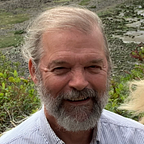The Myth of Balance in Nature
The “balance in nature” myth is one of the more persistent examples of environmental wishful thinking. In 2009, biologist John C. Kricher was rightly compelled to pen an entire book debunking it. The myth reflects our understandable desire for a stable world with a climate and the habitats that suit us and the other species we like. But the myth is also another form of Edenism, the desire for a paradise and the constant fear (even alarm) that we are violating paradise.
Scientifically speaking, there is no equilibrium in nature. Instead, there is constant flux, minor and massive disturbances, the striving of all life forms to survive and reproduce, and (of course) competition among various species. All of this comports with Darwin’s theory of biological evolution.
The myth of balance in nature is an old one. Perhaps the most prominent late 19th century proponent was botanist Frederic Edward Clements, who conceived of a “climax” stage of ecology. In the 1970s, high school biology classes were still teaching about “pioneer” tree species that first populated an open space, followed by a “natural succession” of other species, ending in a “climax forest.” The climax forest then supposedly represented an equilibrium habitat.
But even back in the 1950s, Henry Allen Gleason was ahead of his time when he offered a more insightful interpretation of “continuum ecology” involving various fauna and flora competing to survive in intricate habitats. Today, the better biologists appreciate constant ecological flux, using terms like “unpredictable” and “irregular disturbance.”
“Balance” in nature is thus far more a figment of popular culture imagination. It does not reflect a useful approach for understanding ecological habitats.
By the way, “habitat” is the more accurate concept, not “ecosystem.” “Ecosystem” is also a wishful thinking concept borrowed from physics. We wish there was an ecological “system” that we understood with the clarity of mathematics. Instead, we try to understand various species in their habitats, but we never even know all the ecological components therein, much less all the cause-and-effect relationships among those components. And, before we know it, the few parts we partially understand have themselves changed. If ecosystems actually existed, we could define where one ended and another began. We cannot. And to pursue the endless horizon of edgeless ecosystems only seems to lead to romantic notions like the “Gaia Hypothesis;” James Lovelock’s idea of the entire earth being a living organism. But why stop at the earth? Meteors continue to enter earth’s “ecosystems.” The sun continues to affect the entire planet with varying degrees of solar radiation. At that point, “ecosystem” has reached its natural trajectory as an untenable absurdity for attempting to understand ecology.
Concepts like “balance in nature” and “ecosystems” reflect cultural values, not scientific truths. In fact, popular environmental notions regularly confuse and conflate scientific truths (no matter how tentative) with philosophical values. Presupposed worldviews often contradict core scientific methodology, so one of the best caveats in science is simply acknowledging that there is so much we do not yet know. Such humble open inquiry is highly conducive to learning new facts, and an added incentive to remain curious and exploratory.
Copyright © 2022 Will Sarvis. All rights reserved.
SOURCES AND FURTHER READING
Michael G. Barbour, “Ecological Fragmentation in the Fifties,” in Uncommon Ground: Toward Reinventing Nature, edited by William Cronon (NY: W.W. Norton & Co., 1995), 233–43.
Peter J. Bowler, The Norton History of Environmental Sciences (NY: W.W. Norton & Co., 1993), 508, 516, 517, 524–25, 544-45, 546.
Alston Chase, In a Dark Wood: The Fight Over Forests and the Rising Tyranny of Ecology (NY: Houghton Mifflin, 1995), 106, 108.
John C. Kricher, The Balance of Nature: Ecology’s Enduring Myth (Princeton: Princeton University Pr., 2009), 91–92, 109.
Malcolm Nicolson, “Henry Allan Gleason and the Individualistic Hypothesis: The Structure of a Botanist’s Career,” Botanical Review 56, no. 2 (April-June, 1990): 107–08, 111–14.
S.T.A. Pickett and P.S. White, eds, The Ecology of Natural Disturbance and Patch Dynamics (Orlando, FL: Academic Pr., 1985), xiii, 12, 374, 376, 383.
Donald Worster, Nature’s Economy: A History of Ecological Ideas, 2nd ed. (NY: Cambridge University Pr., 1994), chapter 11.
